Neuro-intestinal acetylcholine signalling regulates the mitochondrial stress response in Caenorhabditis elegans
- PMID: 39097618
- PMCID: PMC11297972
- DOI: 10.1038/s41467-024-50973-y
Neuro-intestinal acetylcholine signalling regulates the mitochondrial stress response in Caenorhabditis elegans
Abstract
Neurons coordinate inter-tissue protein homeostasis to systemically manage cytotoxic stress. In response to neuronal mitochondrial stress, specific neuronal signals coordinate the systemic mitochondrial unfolded protein response (UPRmt) to promote organismal survival. Yet, whether chemical neurotransmitters are sufficient to control the UPRmt in physiological conditions is not well understood. Here, we show that gamma-aminobutyric acid (GABA) inhibits, and acetylcholine (ACh) promotes the UPRmt in the Caenorhabditis elegans intestine. GABA controls the UPRmt by regulating extra-synaptic ACh release through metabotropic GABAB receptors GBB-1/2. We find that elevated ACh levels in animals that are GABA-deficient or lack ACh-degradative enzymes induce the UPRmt through ACR-11, an intestinal nicotinic α7 receptor. This neuro-intestinal circuit is critical for non-autonomously regulating organismal survival of oxidative stress. These findings establish chemical neurotransmission as a crucial regulatory layer for nervous system control of systemic protein homeostasis and stress responses.
© 2024. The Author(s).
Conflict of interest statement
The authors declare no competing interests.
Figures
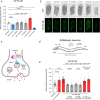
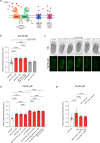
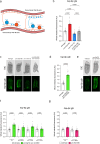
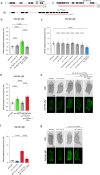
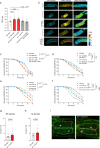
Similar articles
-
ASI-RIM neuronal axis regulates systemic mitochondrial stress response via TGF-β signaling cascade.Nat Commun. 2024 Oct 19;15(1):8997. doi: 10.1038/s41467-024-53093-9. Nat Commun. 2024. PMID: 39426950 Free PMC article.
-
FSHR-1/GPCR Regulates the Mitochondrial Unfolded Protein Response in Caenorhabditis elegans.Genetics. 2020 Feb;214(2):409-418. doi: 10.1534/genetics.119.302947. Epub 2019 Dec 4. Genetics. 2020. PMID: 31801834 Free PMC article.
-
Two sensory neurons coordinate the systemic mitochondrial stress response via GPCR signaling in C. elegans.Dev Cell. 2022 Nov 7;57(21):2469-2482.e5. doi: 10.1016/j.devcel.2022.10.001. Epub 2022 Oct 28. Dev Cell. 2022. PMID: 36309009
-
Mitochondrial recovery by the UPRmt: Insights from C. elegans.Semin Cell Dev Biol. 2024 Feb 15;154(Pt A):59-68. doi: 10.1016/j.semcdb.2023.02.002. Epub 2023 Feb 13. Semin Cell Dev Biol. 2024. PMID: 36792440 Review.
-
Germline regulation of the somatic mitochondrial stress response.Trends Cell Biol. 2024 Aug;34(8):617-619. doi: 10.1016/j.tcb.2024.07.004. Epub 2024 Jul 20. Trends Cell Biol. 2024. PMID: 39034173 Review.
References
MeSH terms
Substances
Grants and funding
- P40 OD010440/OD/NIH HHS/United States
- GNT2000766/Department of Health | National Health and Medical Research Council (NHMRC)
- VIF23/Veski
- GNT1137645/Department of Health | National Health and Medical Research Council (NHMRC)
- GNT1105374/Department of Health | National Health and Medical Research Council (NHMRC)
LinkOut - more resources
Full Text Sources

